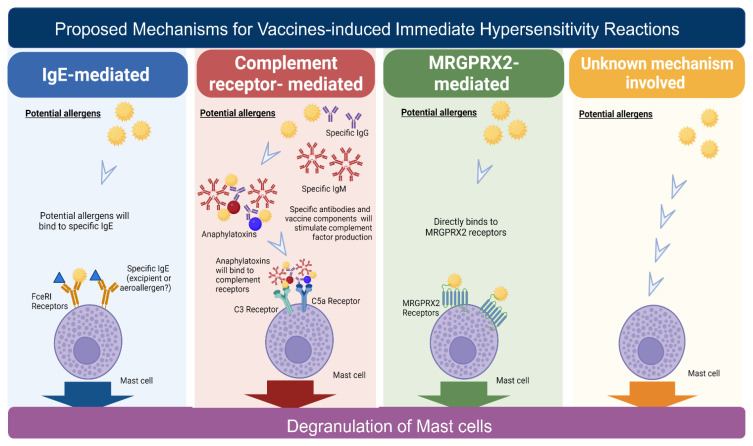Figure 1.
Proposed mechanismsfor immediate hypersensitivity reactions. There are four proposed mechanisms for immediate hypersensitivity: IgE-mediated, complement-receptor-mediated, Mas-related G protein-coupled receptor X2 (MRGPRX2)-mediated mast cell activation, and an unknown mechanism. Binding of allergens from the components of vaccines to antibodies or receptors may initiate the hypersensitivity reactions. The specific IgE antibodies recognize the active components or excipients of the vaccines. IgE antibodies are then coupled with receptor-FcεRI on the mast cells, resulting in mast cell degranulation. These specific IgE antibodies may be brought by previous exposure to allergens in cosmetics, drugs, aeroallergens, or food. Vaccine components may activate the complement-receptor-mediated pathway and induce anaphylatoxins that could be recognized by complement receptors on the mast cells. In addition, binding of the vaccine components and excipients to MRGPRX2 receptor may directly activate mast cells. Furthermore, immediate hypersensitivity reactions may be induced by an unknown mechanism. These proposed mechanisms could lead to mast cell degranulation and the release of effector mediators. Abbreviation: MRGPRX2, Mas-related G protein-coupled receptor X2; IgE, immunoglobulin E; PEG, polyethylene glycol.

